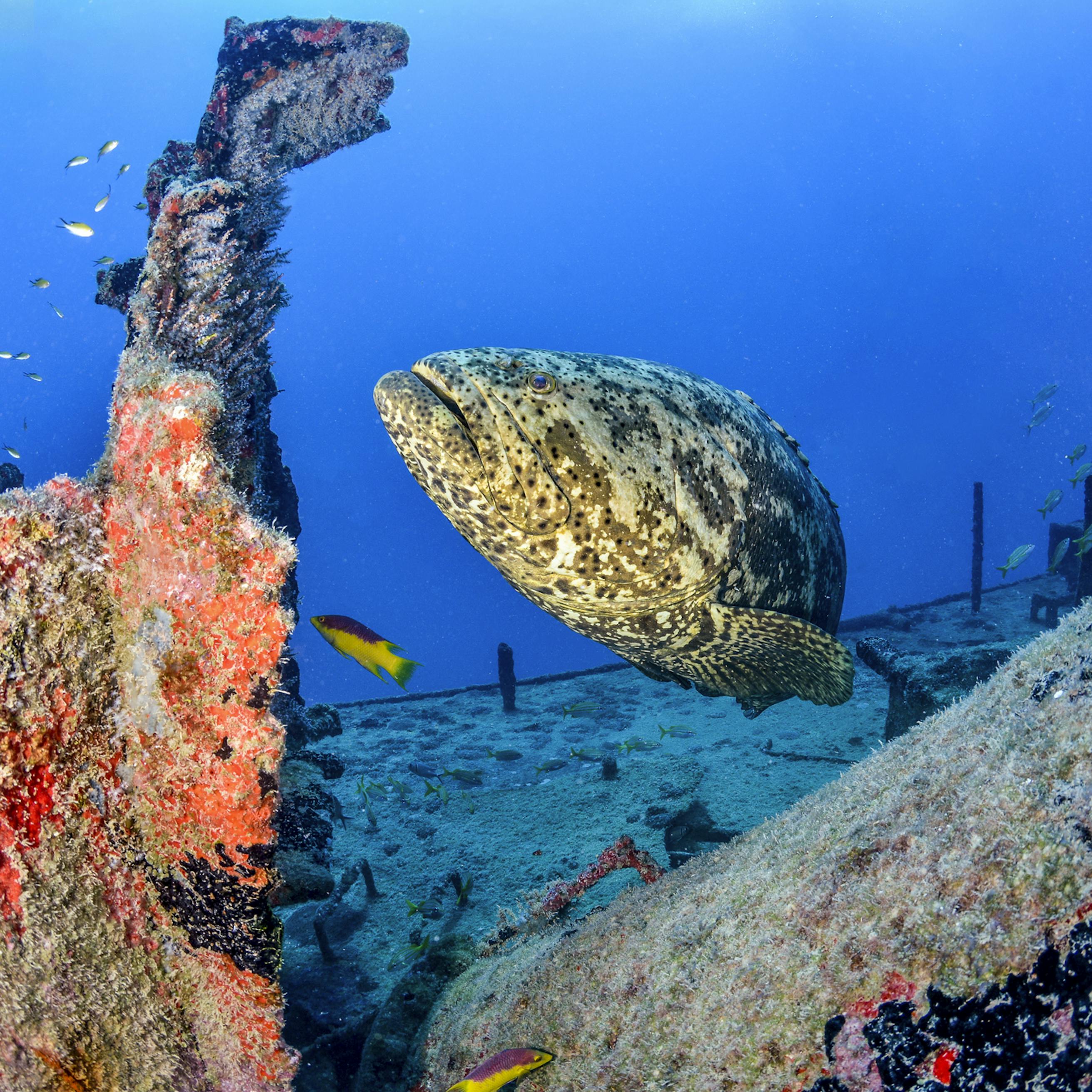When did Goliath Groupers become protected?
Goliath Groupers became protected in 1990 after overfishing nearly wiped out their entire population.
Why are Goliath Groupers protected?
Because Goliath Groupers are slow to rebound and their populations were depleted so severely, they are considered critically endangered and their harvest had been prohibited for more than thirty years until that ban was lifted in Florida in 2022.
What eats Goliath Grouper?
While juvenile Goliath Groupers can be preyed on by a variety of predators including larger fish and sharks, fully grown Goliath Groupers tend to only have larger sharks as their sole predator.
How many Goliath Groupers are left?
That is the question, isn’t it? While we can estimate the general growth rate of Goliath Groupers, scientists are unsure of the population size as of yet.
Where do Atlantic Goliath Groupers live?
You can usually find Goliath Groupers hanging around coral reefs and rocky or muddy bottoms. They prefer warm waters which is why you’ll find them while scuba diving around Florida, in the Caribbean, in the Gulf of Mexico, and as far south as Brazil.
Are Goliath Groupers dangerous?
Goliath Groupers are not dangerous if you keep your distance and heed their warnings. Usually they pay no mind to humans, but if they feel threatened, they will warn you with a deep grunt of disapproval, and, in extreme but rare cases, have been seen charging or biting humans who invaded their boundaries.








